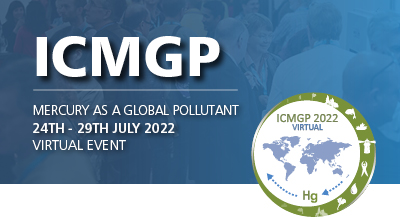| Abstract Title: | Mercury Contamination in Marine Fisheries Resources Following The Fundão Dam collapse, Brazil |
| Presenter Name: | Gabriel Oliveira de Carvalho |
| Company/Institution: | Federal University of Rio de Janeiro |
| Session: | Special Session - Mercury in the Southern Hemisphere |
| Day and Session: | Wednesday 27th July - Session One |
| Start Time: | 06:30 UTC |
| Co-Authors: | Gabriel Oliveira de Carvalho,Paulo S. Salomon,Matheus O. Freitas,Olaf Malm,Daniele Kasper,Virg¡lio J. M. Ferreira-Filho,Cl udio E. T. Parente,Artur Obino,Pamela C. Solano,Tayana S. Louzada,Dejair Pontes,Cristiano N. da Silva,Rodrigo L. Moura |
Abstract Information :
The Fund?o Dam collapse in 2015 released 45 million t of iron ore tailings to the Doce river watershed, reaching coastal waters. Previous studies pointed out that areas south of the river mouth were directly affected during the acute inputs? pulse in the first months following the rupture, while areas north of the river mouth were reached by the turbidity plume after southerly winds and were continuously affected by longshore drift. Here, we present an overview of total mercury (THg) contamination in seafood (molluscs, crustaceans and fishes; n = 410, covering 37 species) marketed in six municipalities located to the north and south of Doce River mouth along ~400 km of coastline, in 2019. Total Hg concentrations were determined using a LUMEX Mercury Analyzer (RA-915+) coupled to a sample pyrolysis accessory (Pyro-915+). Concentrations of THg ranged from 0.004 to 2.7 mg/kg wet weight (w.w.) across all samples and statistically significant differences were recorded between fishes, mollusks and crustaceans. Fishes presented the highest concentrations, with significant differences between trophic guilds (carnivore-piscivores > zoobentivores > detritivore). Significantly higher median concentrations were found for fishes northward from the Doce River mouth compared to southward samples, while higher concentrations in crustaceans were found southward. Among all samples, only fishes (14% of them) exceeded safety limits for consumption established by Codex Alimentarius, being 21% of carnivores > 1.0 mg/kg and 14% of non-carnivorous > 0.5 mg/kg. Furthermore, the percentage of samples above safety limits in the current study were more than ten times greater than reported by the Brazilian government (ANVISA, 2019) for marine fishes in the same impacted region. Measures to reduce consumption and commercialization of seafood above safety limits for consumption are needed and include improving the enforcement of the no-fishing zone at the Doce river mouth and continuous monitoring.



